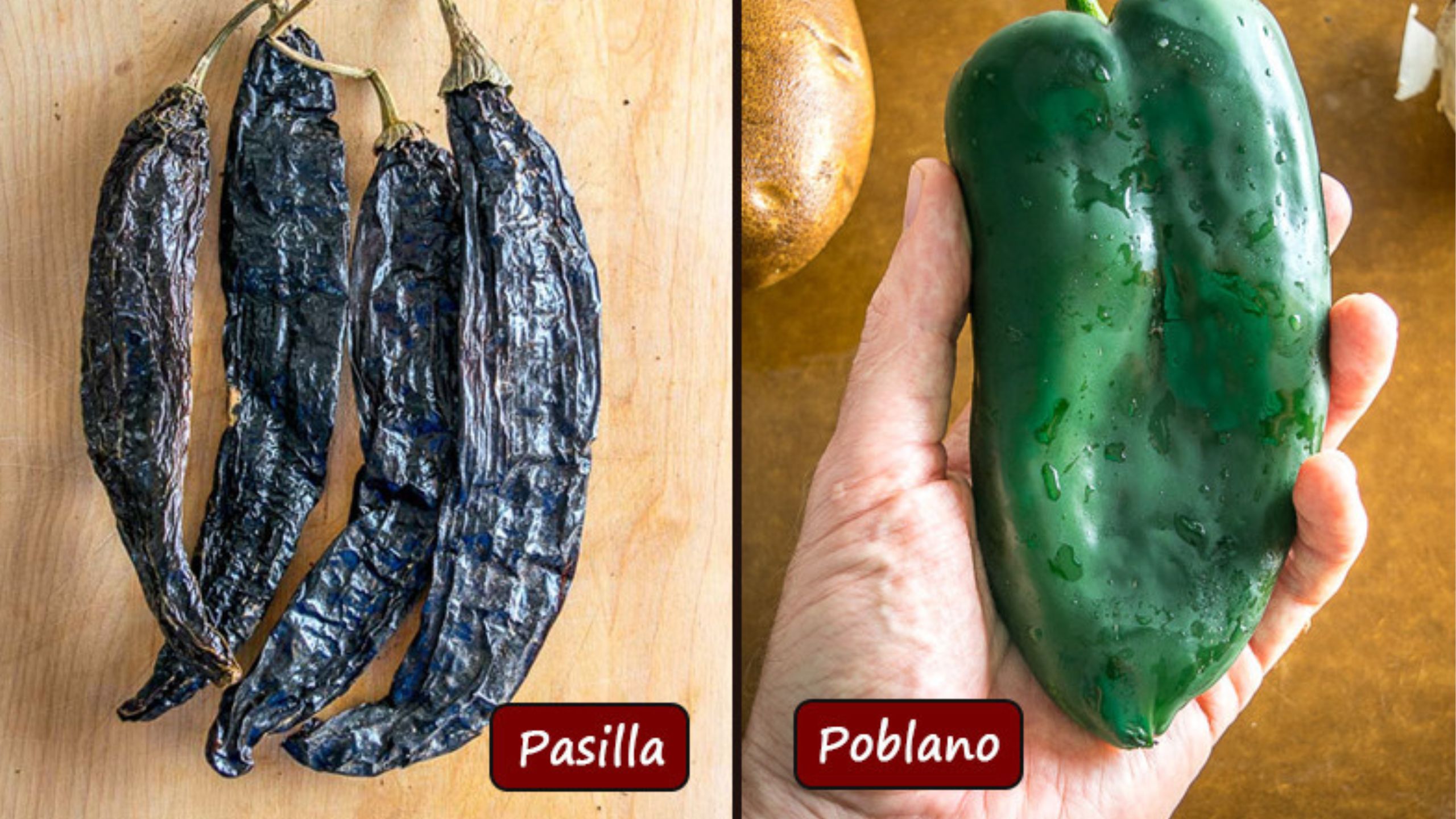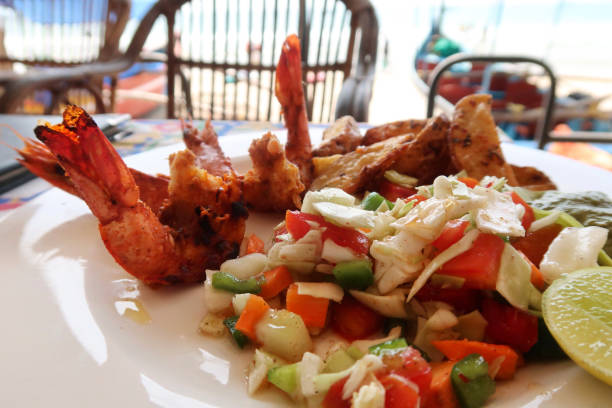Contents
Pasilla pepper and poblano peppers are two notorious Chiles in the pepper world. They are often mislabeled by super markets and grocery stores. It makes people wonder about are poblano and pasilla peppers interchangeable?
Moreover, what is the best way to pick up the same chili pepper you are intended to get? All this and many more are coming ahead, go for it. And if you are going to buy the one, avoid the confusion by considering some obvious differences between these two chili peppers listed below. So, let’s dive deep into it.
Pasilla Pepper Vs Poblano
Pasilla pepper is a dried version of chilaca Chile with wrinkled, peppery thin, and dark brownish chili skin. The Chile pods are large, slender, curved, and tapered towards the non-stem end of the chili. The pepper is purely grown to be dried to make rubs and seasonings for soups, stews, casseroles, enchiladas, and salsas.
However, poblano pepper is a fresh Chile with taut, glossy, curved, and heart-shaped pods. The Chile skin is thicker and fruitier rich in plenty of cream-colored and flat seeds. Poblano peppers are grown purely to be used fresh as a recipe ingredient.
Over now, it’s obvious that poblano chile cannot replace pasilla pepper in your savory treats. However, looking for the best pasilla pepper substitute is not so challenging.
Appearance And Size
The apparent outlook of both pasilla and poblano peppers is a difference that you can consider in a first glance. Both Chile peppers have large pods of different sizes and colors.
To be exact, pasilla is a dried Chile with a shiny, wrinkled, and slender pod, whereas poblano is a fresh chili pepper with wider, taut, smooth, and curved pods.
Pasilla pepper skin is paper-like thin and flaky with a dark brownish tint. On the other side, poblano Chile skin is thicker, crunchier, and fruitier with a dark green hue.
When considering pod size, both peppers again share no similarity. Pasilla pepper pods grow up to 8 to 10 inches longer with 1 to 2 inches wider. However, poblano chili pods grow up to 5 to 7 inches with 3 inches in width. So, one can easily tell these two Mexican Chiles apart by appearance and size.
Flavor
The flavor of peppers is the most critical factor you need to consider before tossing them into any recipe. Since pasilla pepper is a dried chili, while poblano is a fresh one, the ultimate flavor they impart to the dish is far different.
Pasilla pepper offers a taste blend of smoky, earthy, and peppery flavor notes with a bit of spicy kick and zing. However, the heat is far milder than standard jalapeno peppers and so will not lingers on the palate.
You can get the comparable recipe flavor and heat using a variety of other Mexican chiles, including dried Anaheim pepper, Mulato pepper, and guajillo chile.
On the other hand, poblano pepper has a slightly sweet and fruity flavor with a mild spicy kick. Cooking further mellows the flavor of poblano Chiles and turn the overall flavor towards the sweet side. However, red poblano peppers offer a similar flavor with more heat than green poblano. This is because peppers develop heat as they ripe and left on the plant for longer.
Scoville Heat Units
The heat level is another factor you need to consider when diving deep into things and Scoville unit is what measures the heat of peppers. The higher Scoville heat units mean the hotter will be the pepper.
Peppers are arranged on Scoville Heat Scale where milder chiles with lower Scoville units stay at the bottom, while peppers with higher Scoville unit head on top. So, where do pasilla and poblano chiles lie on the scale?
Well, you will find your beloved Mexican chiles at the bottom of the scale thanks to their milder heat and spice level. Poblano chile scores 1,000 to 2,000 heat units, whereas the heat of pasilla pepper ranges from 1,000 to 2,500.
Pasilla pepper is relatively hotter and spicier than poblano because it stays longer on the plant. Thereby, the moderate heat of pasilla pepper comes in handy while seasoning a dish, and poblano chile work great as a recipe ingredient.
Versatility
When it comes to the versatility of pepper, both are pretty much relatable. In terms of cooking, poblano Chile wins the spot. Cooking makes the flavor of poblano mellower, juicier, and sweeter that pairs well with other recipe ingredients.
In the opposite side, pasilla pepper is truly meant for garnishing and sprinkling after the cooking process. A fine drizzle of pasilla powder enhances the recipe flavor by tons.
Culinary Usage
The way how you use these two Mexican peppers also tells them apart. They are differently used and enjoyed in a variety of recipes. If one pepper is a recipe finishing ingredient, the other one is a recipe ingredient. Where one is better to use in a powder form, the other one is used as a whole. So, you cannot substitute one for another.
Pasilla pepper is used to make dry rubs and seasonings. It’s great to sprinkle over side sauces, salad dressings, salsas, and soups to amp up the flavor. However, poblano chili is great for roasting, grilling, stuffing, and stir-frying.
Conclusion
There is no real winner when it comes to pasilla pepper vs poblano. Pasilla pepper is best as a seasoning and flavor enhancer, whereas poblano is great for cooking. Thereby, you cannot substitute one for another.




